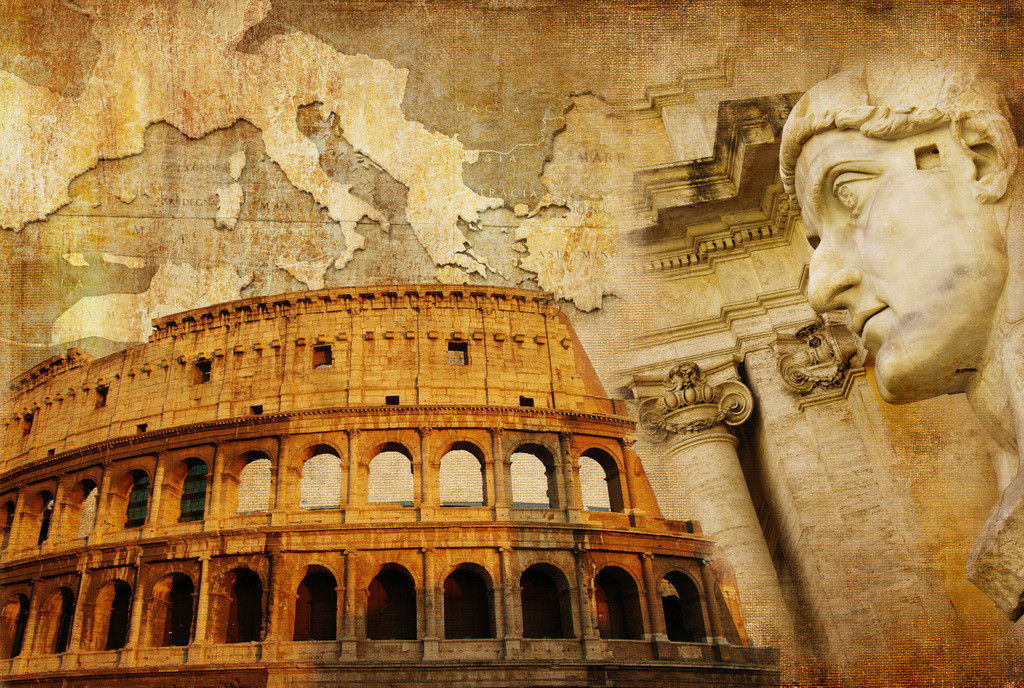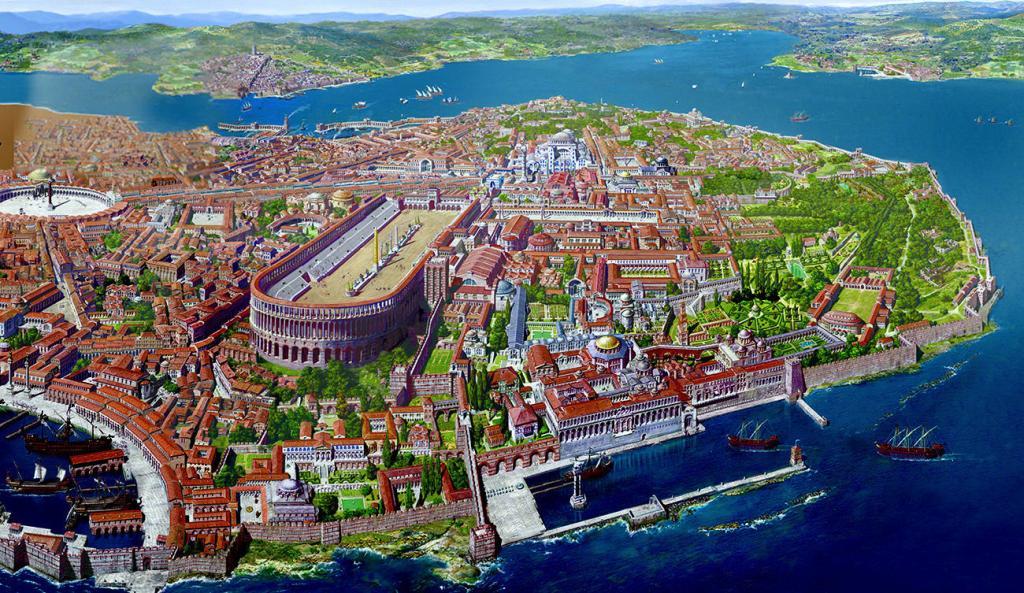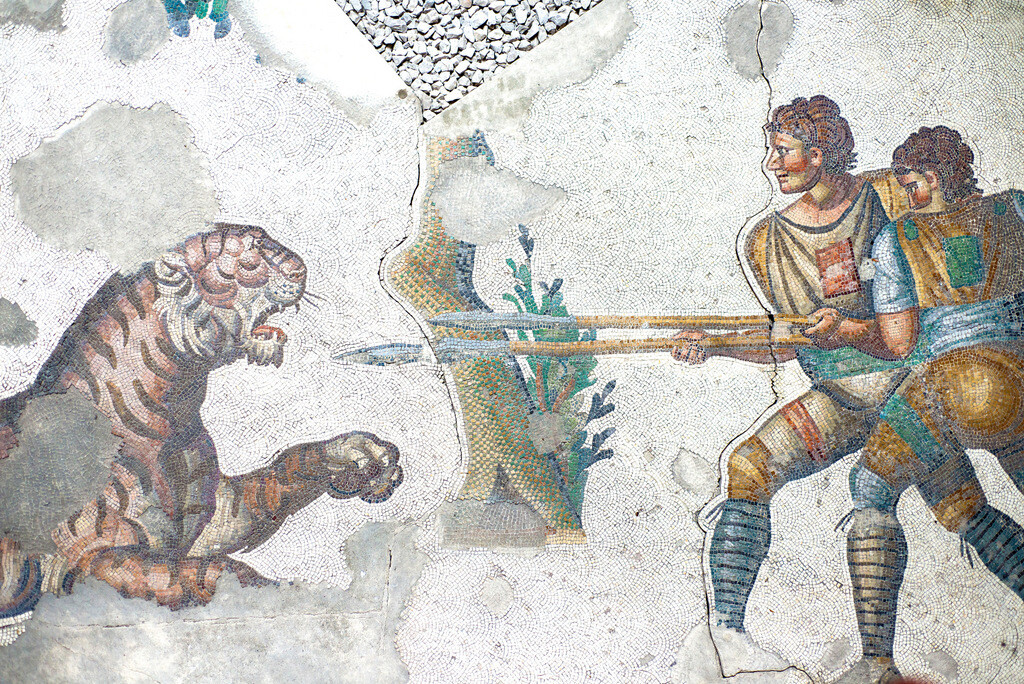The Great Palace Mosaics Museum is located in the Sultanahmet district of Istanbul. The mosaic collection, overshadowed by the more popular museums, sheds light on Eastern Roman culture in late antiquity.
In this article you can find information about the history of the Great Palace of Constantinople. In addition, the Great Palace Mosaics Museum entrance fee and opening hours are also noted.
The Great Palace Mosaic Museum still closed to visitors due to restoration as of May 2024. It is not yet known when it will open. I will update this post when the official announcement regarding the reopening date is made.
History of the Great Palace (Constantinople)
The history of the Great Palace dates back to the 4th century. In order to fully understand the sophisticated history of the Grand Palace, we need to have a look at the Roman Empire era. Having remained a free Greek colony for 800 years, Byzantium was conquered by the Romans in 195 AD.
1. The First Roman Emperor in Istanbul
Septimius Severus was the first Roman emperor to come to Byzantium in 2nd Century. However, Septimius’ arrival wasn’t friendly at all as he was punishing every city that supported his rival Pescennius Niger. Since Byzantium was one of these cities, it was burned and destroyed by Septimus.
After he cooled down, he realized that the city was on a strategic location and he decided to rebuild the city and constructed the first Roman buildings in Istanbul. However, in these years Byzantium was not a city of great importance for the Roman Empire.
2. Civil Wars of Tetrarchy

Byzantium gained importance during the Tetrarchy (the reign of 4 emperors) and the civil wars that followed. Emperor Constantine realized the strategic importance of Byzantium as he fought his rival Licinius to become sole emperor.
Licinius went on the defensive after Constantine attacked him via land by the Balkans and via sea by the Dardanelles and he stayed in Byzantium that provided an excellent defensive advantage.
However, due to the concern of being surrounded by both sea and land, Licinius moved to the Asian Side (Uskudar) and was defeated by Constantine at the Battle of Chrysopolis. Thus, the long years of Tetrarchy civil wars ended and Constantine the Great became the sole ruler.
3. Constantine Realizes the Importance of Istanbul
It’s assumed that Constantine realized Istanbul’s importance during this war. He noticed this peninsula provided an excellent defense and Golden Horn in the north functioned as a hidden port.
Emperor Constantine came to the conclusion that if strong walls were built on the Western side of the city, which was the only part vulnerable to attacks, the city would be impenetrable.
Constantine made a radical decision in 324 AD and he decided to change the old capital of the empire. Most Romans were taken by surprise by this decision as Byzantium definitely wasn’t one of the most important cities of the empire back then.
However, this decision showed Constantine’s vision as he could picture Istanbul being an important cross point in the future. Time proved Constantine right, and Istanbul (Constantinople) eventually became the most important port of the Eastern Mediterranean.
4. Byzantium Being the “New Rome”

Emperor Constantine sent Byzantium an army of architects, engineers, and artists. The whole city was planned to be reconstructed and Byzantium evolved only in 6 years to be named as “Nova Roma” which means the New Rome. The most noteworthy monuments of the city were the Great Palace and the Hippodrome.
In this illustration, you can the Hippodrome where the obelisks are in the center. These obelisks can still be seen at Sultanahmet today. The collection of buildings on the right side of the Hippodrome is the Great Palace, which is the subject of this article.
5. The Great Palace of Roman Emperors
The Great Palace of Roman emperors was located in the best area of the city. The Great Palace stretched from where the Blue Mosque is today to the Sea of Marmara. Inside the palace were mosaic-adorned courtyards, churches, pavilions, and even a polo field.
All the Roman (then Eastern Roman) emperors lived in this place approximately from 4th to 11th century. As the Palace of Blachernae at Golden Horn came into prominence, the Great Palace fell from favor. The Sack of Constantinople in (During the Fourth Crusade in 1204) also contributed to the fall of the Great Palace.
The city remained under the occupation of the Crusaders for 57 years and the Great Palace went to ruin and it was in disrepair. Unfortunately, there were no recourses to rebuild this majestic monument when the city was taken back finally in 1261.
Things to See in Istanbul Mosaic Museum

Although the Great Palace was built during Emperor Constantine era, it was revived during Emperor Justinian era, the most famous Byzantine emperor. Justinian ruled the empire between 527 and 565 and he expanded the palace and added the new parts that are the most well-known today.
Things to see in the Mosaic Museum today is from the Justinian period. These mosaics have a feel of the Ancient Age as the impact of Christianity wasn’t visible on the art back then. These mosaics are considered as the most important representatives of Classical Roman art in Istanbul.
Some other monuments from Justinian’s era, such as Basilica Cistern and Hagia Sophia, and Little Hagia Sophia Mosque (formerly known as the Church of Sergius and Bacchus) are also nearby the museum and can be visited on the same day.
Great Palace Mosaic Museum Entrance Fee 2024
Great Palace Mosaic Museum entrance fee is 10 Euros. Museum Pass Istanbul is valid in this museum. The information about the ticket price was last updated on May 20, 2024 (the museum is currently closed due to restoration).
Great Palace Mosaic Museum Opening Hours 2024

The Great Palace Mosaic Museum opening hours are from 09:00 in the morning to 19:00 in the evening. Please also note that the Istanbul Mosaic Museum is open to visit every day of the week. This information was last updated on May 20, 2024 (the museum is currently closed due to restoration).
Visiting times of museums in Istanbul may change due to events and renovations. Before going to the museum, I recommend you to visit the official website of The Museum and review the latest situation.
How to Get There?
The Museum of Great Palace Mosaics is located within the Arasta Bazaar next to the Blue Mosque. The easiest way to find the museum is to pass through Arasta Bazaar.
Arasta Bazaar is a historical Ottoman bazaar very similar to the famous Grand Bazaar and Spice Bazaar. However, the 400-year-old Arasta Bazaar, unlike other traditional bazaars, is not covered.
In the middle of the Arasta Bazaar, which stretches as a long corridor, there are signs showing the way to the Great Palace Mosaic Museum. So you can find the courtyard of the museum decorated with ancient columns.
Written by Serhat Engul
Hello Serhat, on some website’s there’s written that the museum is closed, is that still true? We are visiting Istanbul the seccond week of September.
Seccond museum I was trying to figure out was the Carpet Museum at the backside of Aya Sofia (besides Topkapi entrance). Is it permanently closed? I recently learned how special the rotunda building on the back side of Aya Sofia actually is 🙂
Thanks, and have a good summer, Bas
Hello Bas, yes the Great Palace Mosaics Museum is closed for restoration. I don’t think it will open anytime soon as it has just closed. I have no information about the Carpet Museum. Have a nice trip!